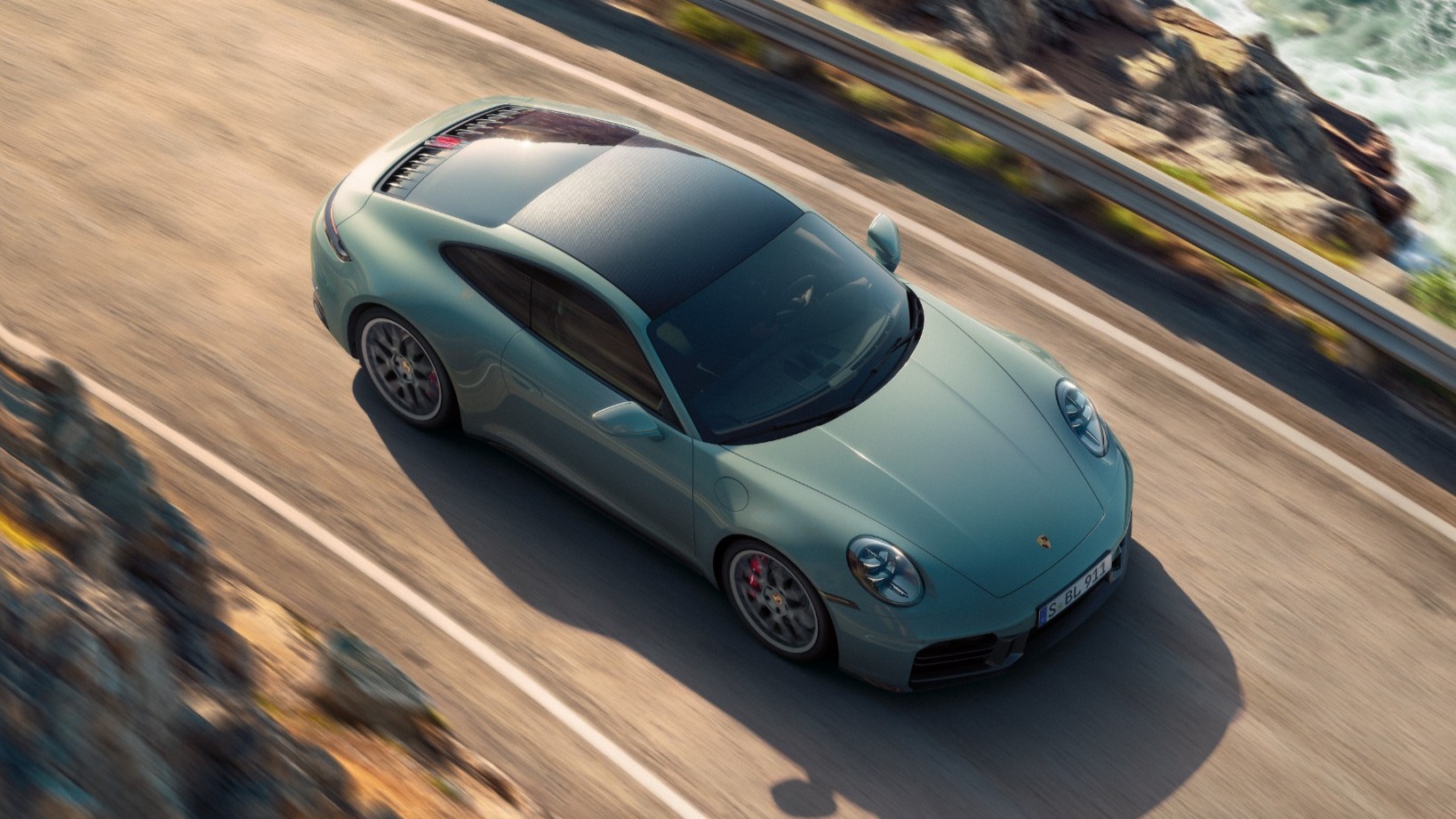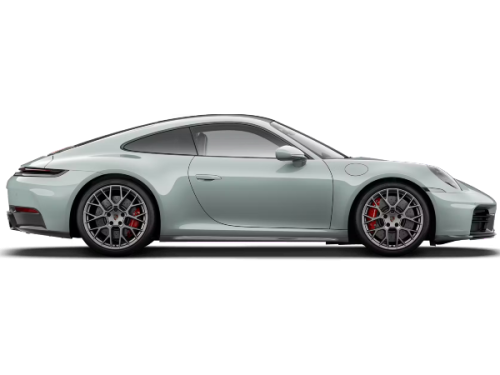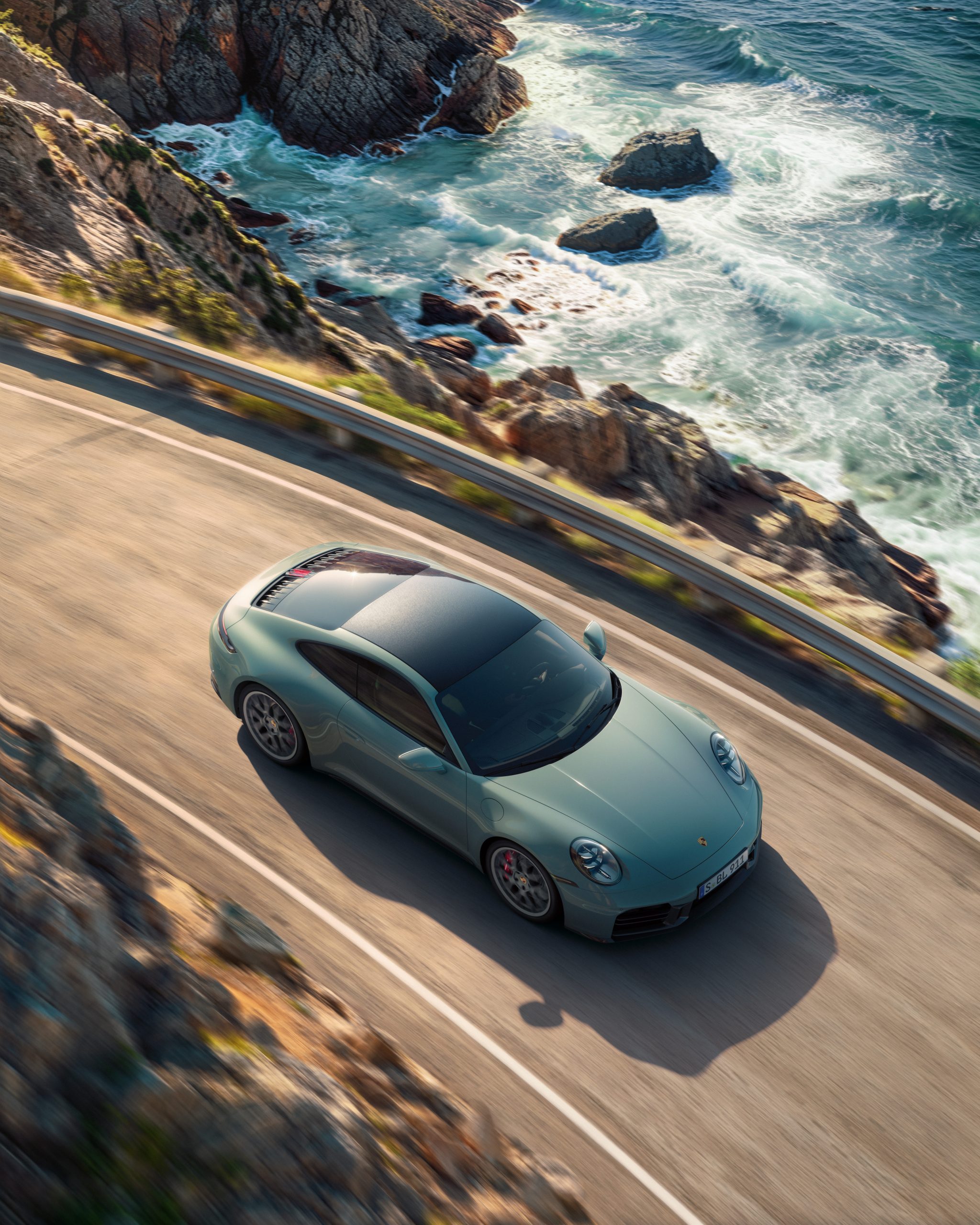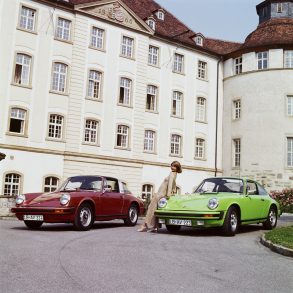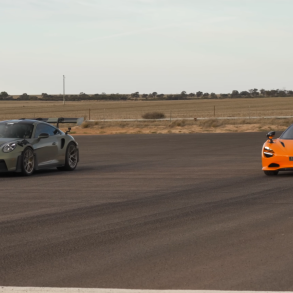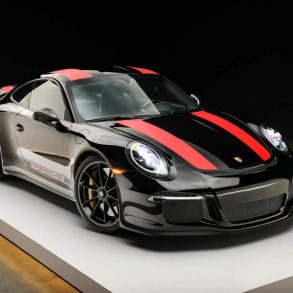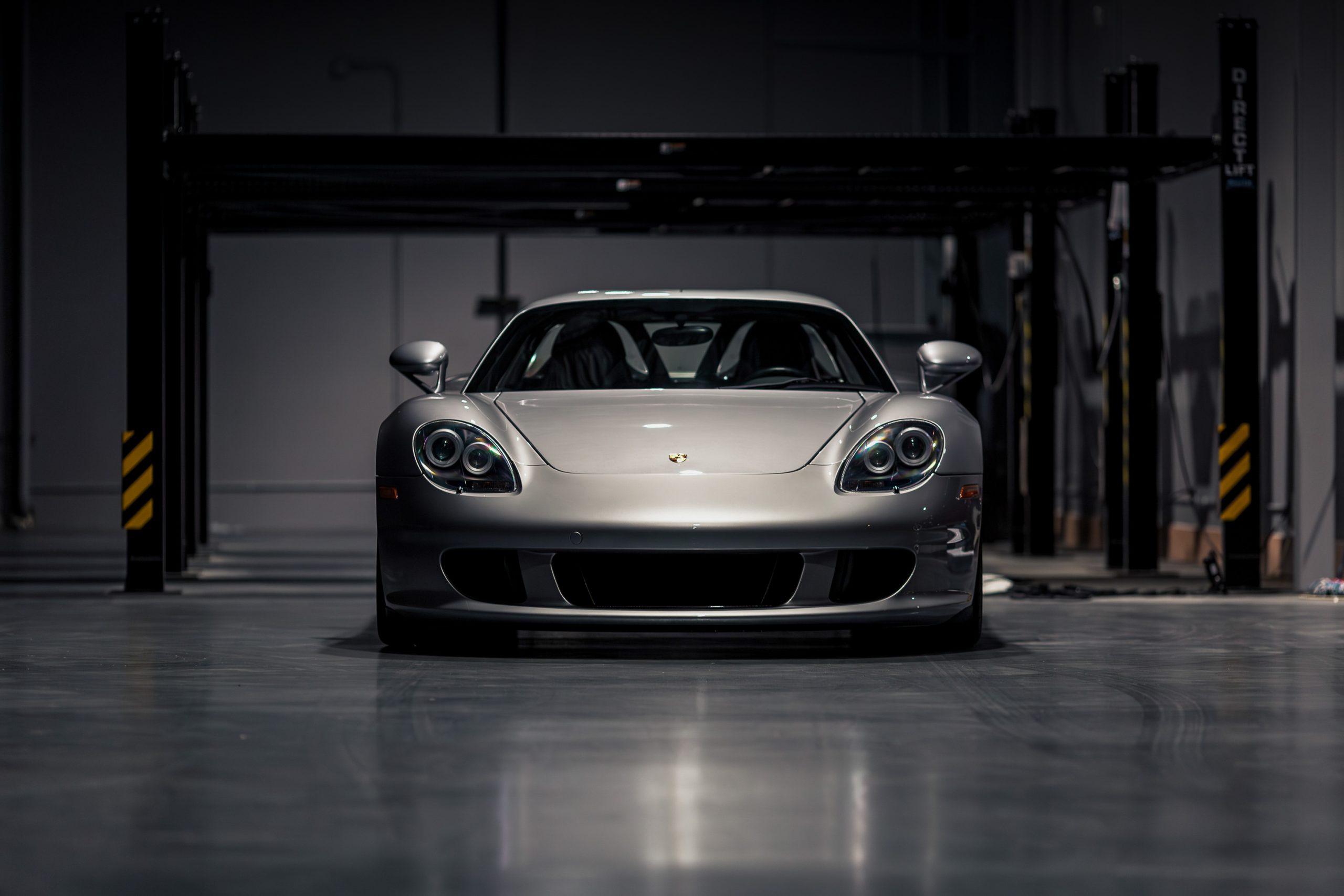Current Porsche 911 (992.2) Carrera 4S – Reviews, Pricing, Specs & Buyers Guide
The Porsche 911 Carrera 4S Coupe represents the very essence of the 911 philosophy: a brilliant synthesis of high performance, everyday usability, and uncompromising engineering. It is the flagship of the non-GTS/Turbo Carrera lineup, combining the potent performance of the ‘S’ engine with the all-weather confidence of ‘4’ all-wheel drive, all wrapped in the purest form factor—the Coupe.
The arrival of the 992.2 generation marks a critical evolution for this model, delivering a significant performance boost derived from higher-spec components, coupled with a revolutionary step into a fully digital cockpit. This guide provides an in-depth look at the specs, history, and defining characteristics of the modern all-wheel-drive 911 benchmark.
The concept of an all-wheel-drive 911 was born out of motorsport, specifically the 953 Paris-Dakar Rally car and the legendary 959 supercar of the mid-1980s. These vehicles demonstrated the dramatic performance benefits of sending power to all four wheels.
The Carrera 4 was introduced to the standard production lineup with the 964 generation (1989), bringing the stability and grip of AWD to the masses. The concept of the “4S” debuted with the 993 generation, specifically the 1996 model. The 4S designation meant:
- All-Wheel Drive (4): For superior traction and stability.
- “S” Performance: Enhanced engine output and chassis components.
- Turbo-Look Body: Crucially, the 4S always inherited the wide-body shell and the significantly larger braking system of the contemporary 911 Turbo model, giving it an aggressive visual stance and superior stopping power without the Turbo’s explosive engine.
The 992.2 Carrera 4S continues this tradition, offering the wide-body look standard across the entire 992 range and inheriting a host of performance hardware from previous generation GTS and Turbo models, cementing its position as the ultimate all-rounder.
Specifications: Performance Leaps to Near-GTS Territory
The 992.2 Carrera 4S Coupe is defined by its substantial engine upgrades, which effectively elevate its performance level to match or exceed the previous generation’s (992.1) GTS model.
Engine and Drivetrain
The 4S is powered by Porsche’s deeply revised 3.0-liter twin-turbocharged flat-six engine.
| Feature | 911 Carrera 4S Coupe (992.2) Specs |
| Engine | 3.0L Twin-Turbo Flat-Six (Boxer) |
| Max Power (hp) | 473 hp @ 6500 rpm (A significant boost over the 992.1’s 443 hp |
| Max Torque (lb-ft) | 390 lb-ft @ 2000-5000 rpm |
| Transmission | 8-speed Porsche Doppelkupplung (PDK) (Standard) |
| Drivetrain | Porsche Traction Management (PTM) All-Wheel Drive |
| 0-60 mph (with Sport Chrono) | 3.1 seconds (Manufacturer estimates) |
| Top Speed | 191 mph |
Key Engine Upgrades:
- Turbocharger Borrowing: The 992.2 4S utilizes turbochargers derived from the previous 992.1 GTS model, allowing for higher boost and more efficient power delivery.
- Enhanced Cooling: The charge-air intercooler system is optimized, featuring technology adapted from the 911 Turbo for superior thermal management and sustained performance.
- Exhaust System: A standard Sport Exhaust System with chrome tailpipes is now included, enhancing the auditory experience that the 992.1 often lacked in standard trim.
Chassis and Dynamics
The 4S is engineered for supreme control and grip, leveraging its all-wheel drive system and advanced suspension technology.
- All-Wheel Drive (PTM): The Porsche Traction Management system is heavily rear-biased, preserving the classic 911 feel, but can instantly and intelligently distribute torque to the front wheels via a water-cooled, electromechanically controlled clutch. This ensures maximum grip during hard acceleration and cornering, especially in low-traction conditions.
- GTS Braking System: The 4S adopts the larger braking hardware of the prior 992.1 GTS, featuring substantial 408 mm front and 380 mm rear discs, housed behind standard 20-inch front and 21-inch rear staggered wheels.
- PTV Plus (Standard): Porsche Torque Vectoring Plus, which includes an electronically controlled rear differential lock, is now standard, significantly improving turn-in and cornering stability.
- Seating Configuration: Unique to the 992.2 Carrera Coupe models, the car is delivered as a two-seater as standard (rear seat delete).11 The classic 2+2 rear seats can be optioned back in at no additional cost.
Design and Model Year Updates (992.1 to 992.2)
The 992.2 facelift is a masterclass in subtle functional design changes combined with a radical overhaul of the driver interface.
Exterior Refinements
The wide, muscular stance of the 992 body remains, but the details are sharper:
- Integrated Lighting: The Matrix Design LED headlights are now standard, incorporating all light functions, including the turn signals.12 This integration allows for a cleaner front fascia design with larger, more optimized cooling air flaps.
- Active Aerodynamics: The front active air flaps are key to cooling and aero efficiency, opening and closing based on driving conditions.
- Rear Aesthetics: The rear bumper is refined, and the inclusion of the Sport Exhaust as standard means a more aggressive rear diffuser area. The full-width light bar—a defining 992 feature—is carried over.
- Widebody Standard: The 4S benefits from the 45 mm wider front track introduced in the 992 generation, giving it a commanding, purposeful road presence.
The Digital Revolution: Interior Updates
The most striking and controversial change for the 992.2 occurs in the driver’s environment:
- The Loss of Analogue: The iconic analogue central tachometer is gone. It has been replaced by a curved 12.6-inch fully digital instrument cluster. While customizable (offering a ‘Classic’ view to simulate the five-dial cluster), this represents the end of a long-standing 911 tradition.
- Start Button: The ignition switch on the left side of the steering column—a nod to the Le Mans starting procedure—is replaced by a modern push Start/Stop button.
- Enhanced Standard Kit: The 992.2 models, including the 4S, see a substantial increase in standard equipment, such as a cooled wireless smartphone charger, heated steering wheel with a drive mode knob (part of the now-standard Sport Chrono Package), and an increased amount of standard leather upholstery.
Driving Experience and Critical Reception
The Carrera 4S Coupe has long been considered the ultimate daily-driver sports car, and the 992.2 refresh only solidifies that reputation.
Performance and Dynamics
- Power Delivery: The 473 hp output is a game-changer. It provides a thrilling rush that closes the gap significantly to the Turbo models. Critics praise the turbocharger strategy for delivering instantaneous torque with almost no lag, making the car feel relentless on the street or track. The 3.1 second 0-60 mph time is supercar quick, enabled by the superb PDK and the PTM AWD launch control.
- The AWD Advantage: The PTM system is incredibly transparent. It allows the driver to feel the rear-wheel bias and the steering purity, but when full power is deployed, particularly out of a corner, the front axle seamlessly hooks up, providing breathtaking exit speeds that few RWD cars can match in everyday conditions.
- Handling Balance: The standard fitment of PASM (Porsche Active Suspension Management) and PTV Plus ensures the chassis is always optimized. The car feels incredibly agile, particularly when optioned with Rear-Axle Steering (RAS), which effectively shrinks the car in corners and parking lots while enhancing high-speed stability.
Reception and Market Positioning
- A Performance Bargain (Relatively): The 992.2 Carrera 4S effectively delivers the performance of the prior generation’s GTS model, but in a slightly more comfortable, less track-focused package. For drivers seeking maximum power without the added cost and complexity of the new T-Hybrid GTS, the 4S occupies a crucial “sweet spot.”
- The Digital Dissent: The removal of the analogue tachometer and the traditional ignition switch has generated the most backlash from the Porsche community. While reviewers concede that the digital screen is technically superior and offers more data, many lament the loss of the intangible connection to 911 history.
- The Best All-Rounder: The 4S Coupe is consistently hailed as the most complete car in the Carrera lineup. It is weatherproof, track-capable, immensely fast, yet comfortable enough for long-distance touring, fitting perfectly into the “everyday supercar” mold. Its hardtop Coupe body ensures the lowest weight and highest structural rigidity of all body styles.
Ownership Considerations: Customization and Value
Pricing and Ownership Costs
The Carrera 4S Coupe sits at a premium over the standard Carrera 4 Coupe and the Carrera S (RWD) Coupe. Its resale value is typically strong, benefiting from its desirable combination of AWD and ‘S’ performance. Maintenance is standard for a high-performance 911, and while components are expensive, the platform is renowned for its durability and reliability.
Essential Optional Equipment
Porsche’s options list is extensive, but certain packages are highly recommended to unlock the 4S’s full potential:
- Rear-Axle Steering (RAS): Highly recommended. It significantly improves the feeling of agility and lightness, making the large 992 platform feel smaller and more nimble.
- Front Axle Lift System (FAL): A necessity for most daily drivers. It raises the front end by 40 mm to clear speed bumps and steep driveways, protecting the low nose.
- Porsche Ceramic Composite Brakes (PCCB): An expensive upgrade, but they offer phenomenal, fade-free braking performance, reduce unsprung mass, and dramatically cut down on brake dust.
- PASM Sport Suspension (Lowered 10 mm): For the driver who prioritizes track performance and a more aggressive stance, this option lowers the ride height and stiffens the suspension settings.
- Lightweight and Noise Insulated Glass: An option to reduce weight and enhance cabin refinement, especially for high-mileage drivers.
The Competition
The 911 Carrera 4S Coupe competes against an array of sophisticated sports cars, but few match its breadth of capability:
- Audi R8 V10 quattro: Offers the drama of a mid-engine V10 and a dedicated AWD system, but lacks the 911’s subtlety and 2+2 practicality.
- Mercedes-AMG GT Coupe: A potent front-mid engine V8 with aggressive styling, but with a different focus on muscular grand touring versus the 911’s rear-engine precision.
- McLaren Artura: A hybrid supercar that rivals the 911’s performance but exists in a far more exotic, less pragmatic space.
Final Conclusion: The New Benchmark
The Porsche 911 Carrera 4S Coupe (992.2) is not just a facelift; it is a recalibration of the 911 hierarchy. By inheriting high-performance components from previous flagship models, it delivers a level of power and dynamic capability that makes it the definitive choice for the driver who demands true year-round, all-weather performance without stepping into the more hardcore or complex territory of the T-Hybrid GTS or Turbo.
Despite the controversial shift to a fully digital cockpit, the core magic of the 911 remains intact. It is an engineering masterpiece that continues to feel familiar, responsive, and utterly engaging. The 4S Coupe is the closest one can get to a perfect, all-purpose sports car: a practical, precise, and breathtakingly fast machine that respects both its heritage and the demands of modern driving.
Pictures & Gallery
Press Release
July 2, 2025
Porsche announces three new 911 model variants with all-wheel drive and 473 hp
911 Carrera 4S, 911 Carrera 4S Cabriolet and 911 Targa 4S announced for MY 2026 Porsche is expanding the 911 model range with three all-wheel drive models for the 2026 model year: The 911 Carrera 4S coupe and Cabriolet, as well as the Targa 4S. All three models gain more power, improvements in standard equipment and enhanced brakes compared to their predecessors. With their arrival, the range of new 911 models with all-wheel drive grows to six variants.
Atlanta. Porsche is expanding the 911 model range with three new variants. The 911 Carrera 4S is available as a coupe and Cabriolet. Together with the Targa 4S, they bridge the gap between the standard 911 Carrera – which is not available with all-wheel drive – and the significantly more powerful GTS models. Like on the rear-wheel drive 911 Carrera S models, additional options for individualization and extended standard equipment are distinguishing features.
All-wheel drive variants are popular among customers buying a 911 “S” variant. In fact, within that specific subset, almost half in the U.S. choose a model powering all four wheels. The three new model variants continue to offer customers a great degree of choice within the 911 product range to meet varied use cases and demands. As with every other model equipped with Porsche Traction Management (PTM), the torque split is rearbiased by default. If required, PTM directs more torque to the front axle. As on its predecessors, the front differential is water cooled and uses an electromechanically controlled clutch.
Improved performance
The new all-wheel drive variants of the 911 adopt the upgraded engine of the Carrera S. Its 3.0-liter twin-turbo six-cylinder boxer engine produces 473 hp (353 kW) and 390 lb.-ft. of torque. That is 30 hp (22 kW) more than in the predecessor. This increase in performance is partly due to the optimized intercooling, the design of which comes from the 911 Turbo. An eight-speed Porsche dual-clutch transmission (PDK) transmits power to all four wheels. The 911 Carrera 4S coupe accelerates from 0 to 60 mph in 3.1 seconds using Launch Control with the optional Sport Chrono Package, and is capable of a top track speed of 191mph.
Upgraded standard equipment
Porsche has significantly enhanced the standard equipment for the Carrera 4S and Targa 4S models. From a performance perspective, the improvements include Sport Exhaust with tailpipes in silver, brakes taken from the previous generation 911 Carrera GTS models measuring 408 mm on the front axle and 380 mm on the rear axle. Uprated dampers with optimized hydraulics are more responsive and improve ride quality over the preceding model. Performance-focused standard features of the prior model remain, including Porsche Torque Vectoring Plus (PTV+) and staggered 20/21-inch Carrera S wheels. Porsche Ceramic Composite Brakes (PCCB) are available as an option, as is PASM Sport Suspension, which lowers the ride height by 10 mm. Rear axle steering is optionally available on the Carrera 4S and Carrera 4S Cabriolet. The system offers increased agility at low speeds and greater stability at high speeds. If equipped, this system also includes a quicker steering ratio and revised front axle kinematics. The 911 Targa 4S has rear-axle steering as standard.
Like all current 911 Carrera Coupe models, the Carrera 4S comes as a two-seater with the option to add rear seats for no additional cost, while the Cabriolet and Targa are equipped with rear seats as standard. The new models feature an upgraded interior. Compared to the preceding Carrera 4S models, the interior comes with extended leather upholstery as standard including the seats, headrests, upper dashboard, upper door panels, and – if equipped – the rear seats. In addition, Matrix Design LED headlights and wireless smartphone charging are standard equipment.
The new 911 Carrera 4S ($154,200), 911 Carrera 4S Cabriolet ($167,400) and 911 Targa 4S ($169,100) are available to order through U.S. Porsche Centers immediately excluding $2,250 for delivery, processing and handling. The Total Manufacturers Suggested Retail Price (MSRP) shown excludes taxes, title, registration, other optional or regionally required equipment, dealer charges, and any potential tariffs. U.S. deliveries of all three models are expected to begin in the fourth quarter of 2025.
60 years of the 911 Targa:
For 60 years, the 911 Targa has combined the enjoyment of a convertible with the yearround comfort of a coupe. The 911 Targa debuted in September 1965 at the IAA in Frankfurt and, like so many Porsche innovations, the elegant, wide Targa bar is inspired by motorsport. With a removable roof and folding rear window, the design allowed for the open air sensations of a convertible while providing the benefit of a fixed bar. Porsche derived the name Targa from the famous Targa Florio race in Sicily.
Today, the Porsche 911 Targa is an icon in its own right, further developed technically and formally over six decades. With the 993 generation (1993), there was no need to remove the roof manually. Since 2006, the 911 Targa has been available exclusively with all-wheel drive. The current Targa roof design, which launched in 2014, provides a fully automatic roof mechanism that opens in 19 seconds and references the style of the early Targa models. The glass rear window lifts up and moves backwards to allow the roof panel to fold away the roof segment folds elegantly. The wide bar and the surrounding rear window form a clear reminiscence of the original model. The roof module of the current Targa is available in four color variants: black, blue, red and brown.


